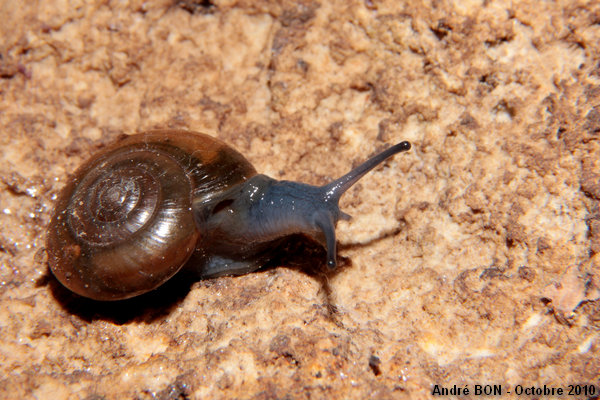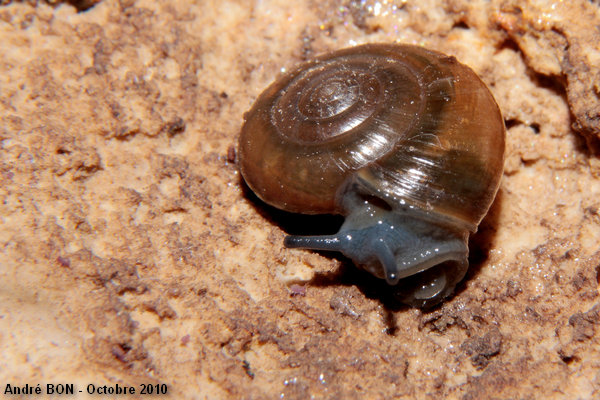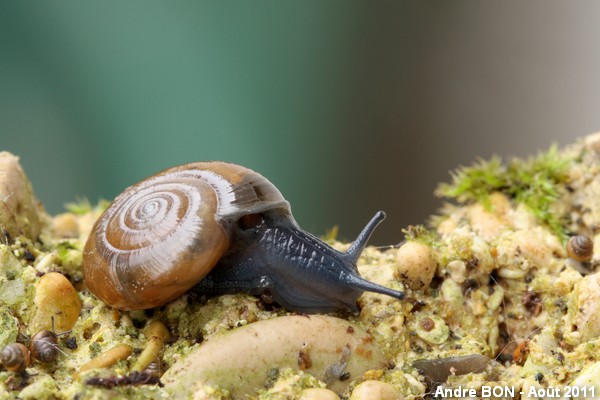


| Darparnaud's Glass Snail (Oxychilus draparnaudi (Beck, 1837)) |



|
|
Scientific name: Oxychilus draparnaudi (Beck, 1837) Common name: Darparnaud's Glass Snail Other names: Other scientific name: Oxychilus lucidus. French name: Grand luisant Order: Stylommatophora Size: Shell diameter from 11 to 16 mm; Shell height from 4.5 to 11 mm. Habitat : Under humid litter or under stones. It is often found in the vicinity of human activities like gardens or urban waste grounds. Food: Predator feeding on small slugs, small snails and worms. Reproduction : This snail lays from 30 to 70 eggs between May and September. Hatching occurs two weeks after. The young snails become adults after nine months. Adults can live up to two years and will die shortly after having laid the eggs. Geographic area: South-western Europe, introduced to Great Britain and to Central Europe. Introduced also to other parts of the world like the island of La Réunion. |
The Darparnaud's Glass Snail is one of the largest members of the Glass Snail family. The shell has a flattened discoidal shape. It shows 5.5 to 6 whorls. It is a pale yellowish brown colour and it is not very shiny. The under side is more whitish. The last whorl, which is rounded, is clearly wider than the previous one (1.7 to 2.2 times). The umbilicus is wide and deep. The visible parts of the soft body are dark blue and grey. You can recognize the Cellar Glass-snail (Oxychilus cellarius) with the last whorl not being so wide than on the Darparnaud's Glass Snail. The Darparnaud's Glass Snail is a predator which is active during the night. |
| [To know more about the Darparnaud's Glass Snail] [Next picture] [Top] |

|
I am used to observing the Darparnaud's Glass Snail under stones in my garden. |
| [To know more about the Darparnaud's Glass Snail] [Next picture] [Previous picture] [Top] |

|
I have just to shoot one picture of the underside to view the umbilicus and the more whitish colour. |
| [To know more about the Darparnaud's Glass Snail] [Previous picture] [Top] |

|
I have found several gastropods under this stone. The Darparnaud's Glass Snail is accompanied by Common Chrysalis Snails (Lauria cylindracea). |